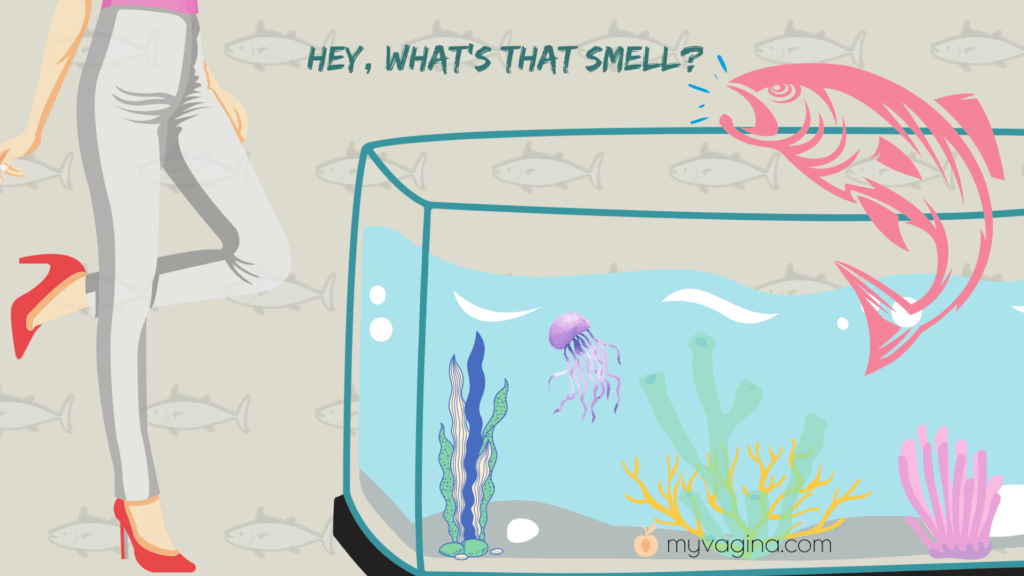We have such an association with vaginas and their fishiness that we often forget to ask why this fishy smell develops in bacterial vaginosis (BV).
The same process of fish smell developing is found in old fish and rotting food, but also in some infections, bad breath, and BV odour.
The fishy odour is caused by a chemical reaction between molecules: ammonia (produced by Gardnerella vaginalis and others) and methanol react, with the help of a catalyst, and become trimethylamine (TMA).
When your microbiome looks great, but you have symptoms
You may have a full vaginal microbiome screen, which comes back as looking great – high in protective lactobacilli, hardly any disruptive bacteria, which are all in low numbers that can be disregarded as a cause of issues. But, still have ongoing, unresolvable and severe symptoms, namely, odour.
When there isn’t a pathogen to blame for symptoms, please book in with expert practitioner, Danielle Brown, at My Vagina. She can help determine the metabolic processes being interrupted that is contributing to the problem.
Fun fishy facts – the TMA freshness test
Fish freshness tests using a swab on the outside of a fish seek TMA, with low amounts used as a measure of freshness. This is why we are told that if a fish ‘smells fishy’ (read: has a lot of TMA), then it’s not very fresh.
Over time, TMA develops and becomes more concentrated, indicating that the fish has been out of the water or dead for longer.
TMA is a product of decomposition in plants and animals. In humans, gut microbes synthesise TMA from nutrients in our food, specifically choline and carnitine.
You can bring on this fishy smell by taking large doses of choline and carnitine. Foods with high choline levels are eggs, milk, liver, red meat, poultry, shellfish, and fish. Carnitine is mostly found in red meat and dairy products.
You can’t avoid these nutrients, and nor should you – unless you have fishy odour syndrome or a metabolism disorder (explained below), you are not at any risk of these nutrients causing a fishy-smelling vagina.
Fishy odour syndrome
Fish odour syndrome is also known as trimethylaminuria. This rare genetic metabolic disorder halts the production of an enzyme that prevents the body from properly converting TMA into TMAO (trimethylamine oxide).
TMA then builds up and is excreted in sweat, urine, and breath, causing a strong fishy odour. Excretion can occur through excessive TMA being secreted, possibly due to gut microbiota issues, altered metabolism, or a hormone issue.
How TMA reacts with our noses – why we hate it
TMA is also an olfactory receptor agonist, which means that when we breathe in TMA, and it hits our olfactory (scent) receptors, we dislike it because our noses have been trained over millennia to be wary of this compound.
TMA causes an ‘attraction-aversion’ response, triggering off a neurological reaction: our brain fires up when we breathe in these amines, which doesn’t always happen with every odour we smell.
We are especially sensitive to some odours (molecules) over others, and this appears to be evolutionary: we are repelled by or attracted to certain molecules – delicious food over rotten food, for example.
TMA’s characteristic fishy odour is always an odour of decomposition in plants or animals, and therefore we are primed to reject it outright. It repels us. This is one reason why having a fishy vag is bad for intimacy – it repels because our animal brains are saying, “Don’t eat this – it’s dangerous!” or “Don’t have sex with her! You don’t like her smell”.
It is the same process by which pheromones are believed to operate: molecules that communicate a message of safety or risk.
An interesting way to block a lover’s nose from TMA… Timberol
A perfuming product called Timberol apparently blocks the TAAR5 receptors in our nose that TMA sets off about 96 per cent of the time.
If we had access to it, it would block the fishy odour most of the time, except Timberol is not available to consumers. It’s a perfume developed for shampoo, shower gel, deodorants, and cleaning products. Timberol was developed by a company called Symrise.
Symrise says about Timberol: ‘powerful modifier for woody accords; imparts a substantive woody-ambery characteristic; strengthens the floral side in feminine concepts at low use levels; underlines the masculinity of men’s fragrances at high use levels.’
The Whiff Test
The whiff test that a doctor or scientist perform that kills bacteria and vaginal cells using potassium hydroxide (KOH). When BV is present, this test produces a fishy odour.
When used during a yeast infection, the whiff test is used to kill the cells and bacteria and leave just the yeast to detect.








